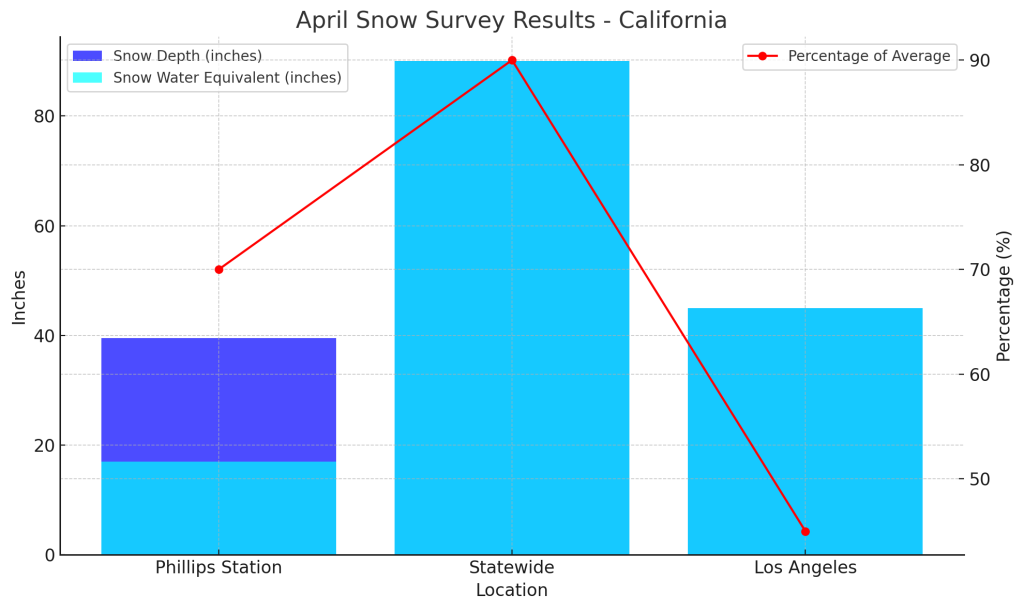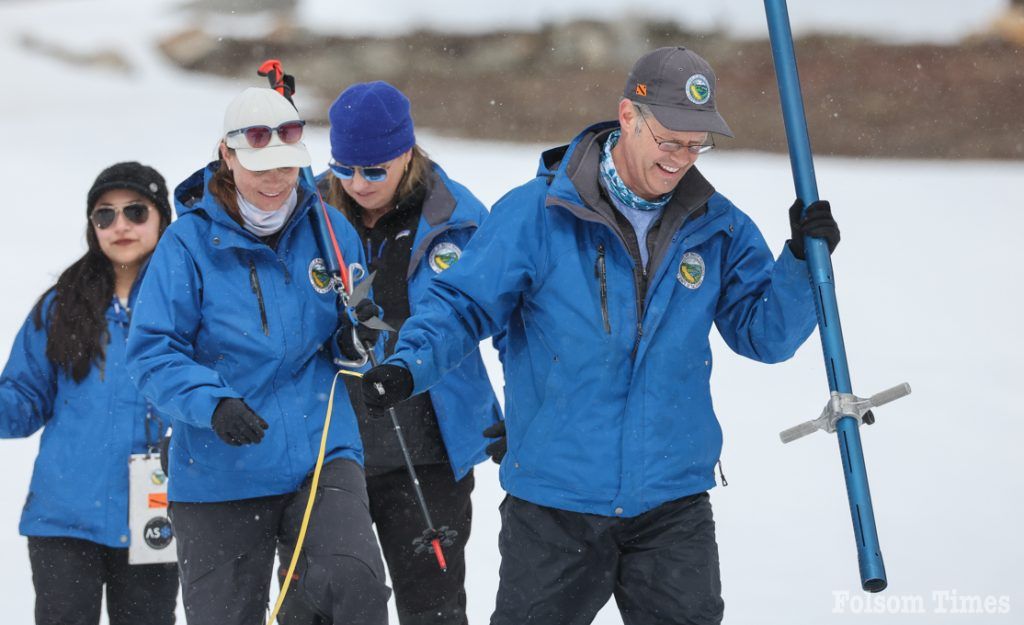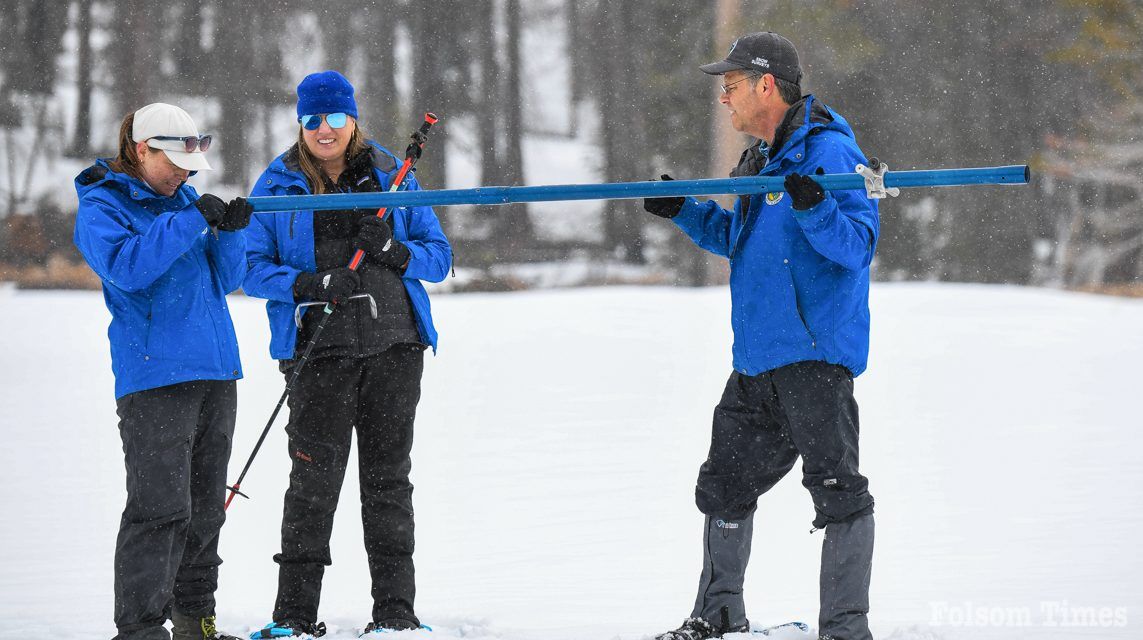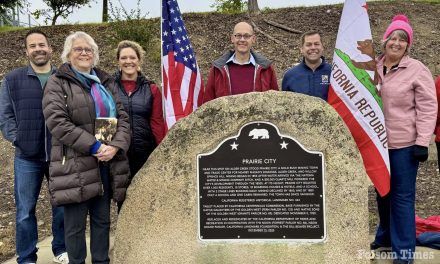Recent Storms Provided Much Needed Boost to the Snowpack but Southern California Still Behind in Precipitation
The Department of Water Resources (DWR conducted it’s April snow survey at Phillips Station Friday, recording a snow depth of 39.5 inches and a snow water equivalent of 17 inches, which is 70 percent of average for this location. The snow water equivalent measures the amount of water contained in the snowpack and serves as a key component of DWR’s water supply forecast. Statewide, the snowpack is currently 90 percent of average for this date. Due to the forecasted storms early next week, DWR conducted the survey ahead of April 1.
While DWR aims to conduct measurements as close to the first of each month as possible, surveys are sometimes scheduled around forecasted storm activity to ensure the safety of DWR staff and media. The upcoming storms may impact the official April 1 snowpack average, and DWR will provide an update on Tuesday.
The April survey serves as a critical marker for water managers across California, as the snowpack typically reaches its maximum volume and begins to melt around this time. Using data from the snowpack, DWR calculates how much snowmelt runoff will flow into the state’s rivers and reservoirs.
Despite the near-normal statewide snowpack, large parts of Southern California remain exceptionally dry. The Los Angeles region, for example, has received only 45 percent of its average rainfall so far this water year.
“It’s great news that our state’s snowpack has recovered from several weeks of extremely dry conditions in the heart of our winter storm season,” said DWR Director Karla Nemeth. “However, it’s not a wet year across the entire Sierra Nevada. The north has a healthy snowpack, but the central and southern regions are below average. That snowpack ultimately flows to the Delta, and the regional disparity affects how much water the State Water Project can deliver.”

Measuring the snowpack is a critical component in managing California’s water supply. On average, the snowpack provides approximately 30 percent of the state’s water needs, earning it the nickname “California’s frozen reservoir.”
Data collected by DWR and its partners in the California Cooperative Snow Surveys Program informs water supply and snowmelt runoff forecasts, known as the Bulletin 120. These forecasts assist water managers in planning how much water will reach reservoirs in the spring and summer. Additionally, the data influences State Water Project allocation updates each month.
“We are very thankful to be ending March with more snow in the forecast next week, especially considering the dry start to the year,” said Andy Reising, manager of DWR’s Snow Surveys and Water Supply Forecasting Unit. “This year has been a reminder of how unpredictable California’s water picture can be until the end of the traditional wet season.”
Before the storms in February and March, California endured an excessively dry January that hampered snowpack growth and worsened wildfire risks in Southern California. In response to ongoing climate extremes, DWR and Governor Gavin Newsom have taken steps to secure and protect the state’s water supply. In January, Governor Newsom issued an executive order streamlining groundwater recharge efforts to capture and store more water during high winter flows.

California is also advancing water management through scientific research and the adoption of Forecast Informed Reservoir Operations (FIRO). This strategy uses the latest forecasting technologies to reduce flood risks and optimize water storage during dry periods. Additionally, the State Water Project recently received a new operating permit in collaboration with federal and state agencies to address the impacts of climate change and protect endangered species.
Thanks to proactive water management and efforts to capture winter storm runoff, California’s reservoirs are currently at 115 percent of average capacity.
DWR typically conducts four to five snow surveys at Phillips Station each winter, from January through April, and, if necessary, in May.
Copyright © 2025, Folsom Times, a digital product of All Town Media LLC. All rights reserved. No portion of this publication may be reproduced, distributed, or transmitted in any form or by any means, without the prior written permission of the publisher.




